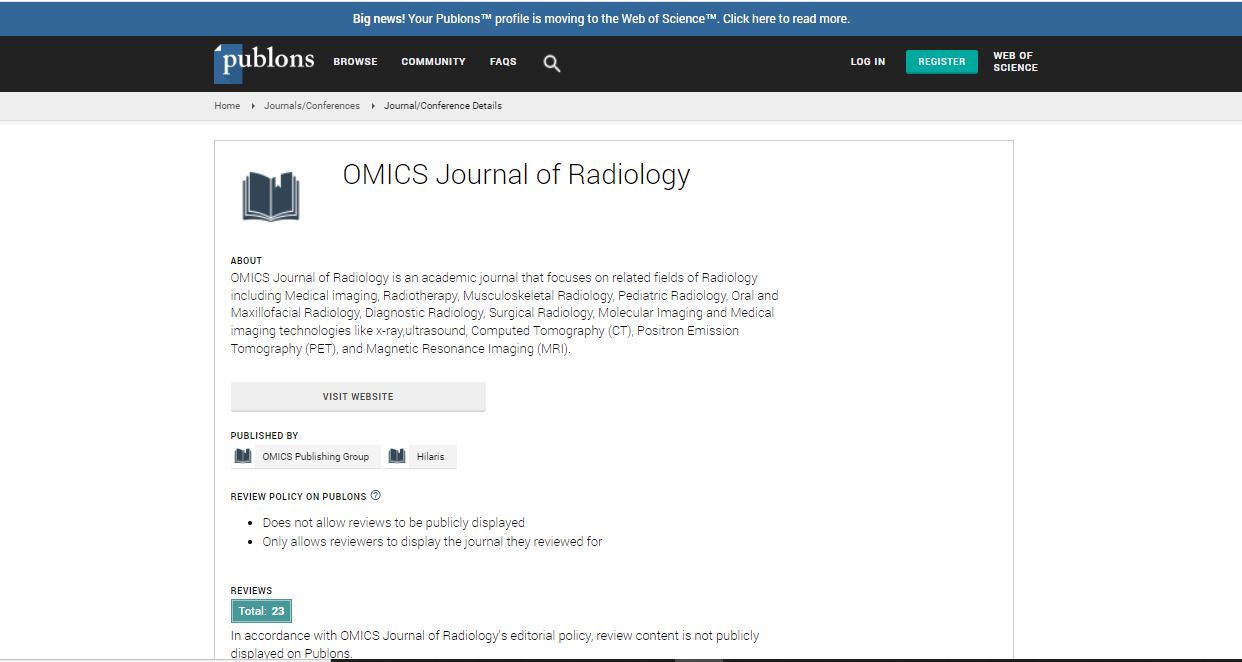Case Report
A Typical Extramedullary Haematopoiesis in a JAK2 Mutated Primary Myelofibrosis Patient after a Minor Head Injury
| Vadsala Baskaran1*, Cho Wai Sum1, Mansoor Aslam2, Alfredo Addeo3 and Ciro Roberto Rinaldi1 | |
| 1Department of Haematology, United Lincolnshire Hospitals NHS Trust (ULHT), Boston, UK | |
| 2Department of Radiology, United Lincolnshire Hospitals NHS Trust (ULHT), Boston, UK | |
| 3Department of Oncology, United Lincolnshire Hospitals NHS Trust (ULHT), Boston, UK | |
| Corresponding Author : | Vadsala Baskaran Department of Haematology United Lincolnshire Hospitals NHS Trust (ULHT), Boston, UK E-mail: reksha_01@yahoo.com |
| Received January 27, 2013; Accepted March 26, 2013; Published March 28, 2013 | |
| Citation: Baskaran V, Sum CW, Aslam M, Addeo A, Rinaldi CR (2013) Atypical Extramedullary Haematopoiesis in a JAK2 Mutated Primary Myelofibrosis Patient after a Minor Head Injury. OMICS J Radiology 2:114. doi: 10.4172/2167-7964.1000114 | |
| Copyright: © 2013 Baskaran V, et al. This is an open-access article distributed under the terms of the Creative Commons Attribution License, which permits unrestricted use, distribution, and reproduction in any medium, provided the original author and source are credited. | |
Abstract
Intracranial extramedullary haematopoiesis (EMH) is very rare. We report the case of EMH with intracranial involvement which developed after trauma in a 73-year-old lady affected by JAK2 mutated myelofibrosis (MF). She was diagnosed with MF in 2005 and treated with low-dose-steroids (prednisolone and oxymethalone) for about 5 years with anexcellent response on full blood count and splenomegaly.
In June 2011, she fell from the stairs and sustained minor trauma to the forehead. Six weeks later, the patient had a gradually enlarging and moderately painful lump in the centre of her forehead. A contrast-enhanced CT scan of the head was performed, showing a small fracture in the frontal bone infiltrated and surrounded by a soft tissue mass extending intracranially and invading the skin extracranially (Figures 1 and 2). A metastatic deposit from an occult tumour was suspected.
In August 2011, we performed a CT-guided trucut biopsy of the forehead mass. The histology report confirmed extramedullary haematopoiesis according to the patchy expression of myeloid (CD45, CD43, myeloperoxidase) and megakaryocytic markers (CD68, CD42b). We concluded that the trauma caused a small fracture which triggered the bone marrow tissue reaction resulting in production of extramedullary haematopoiesis in the site of the trauma. The patient underwent local radiotherapy resulting in complete resolution of the lesion.

 Spanish
Spanish  Chinese
Chinese  Russian
Russian  German
German  French
French  Japanese
Japanese  Portuguese
Portuguese  Hindi
Hindi 
